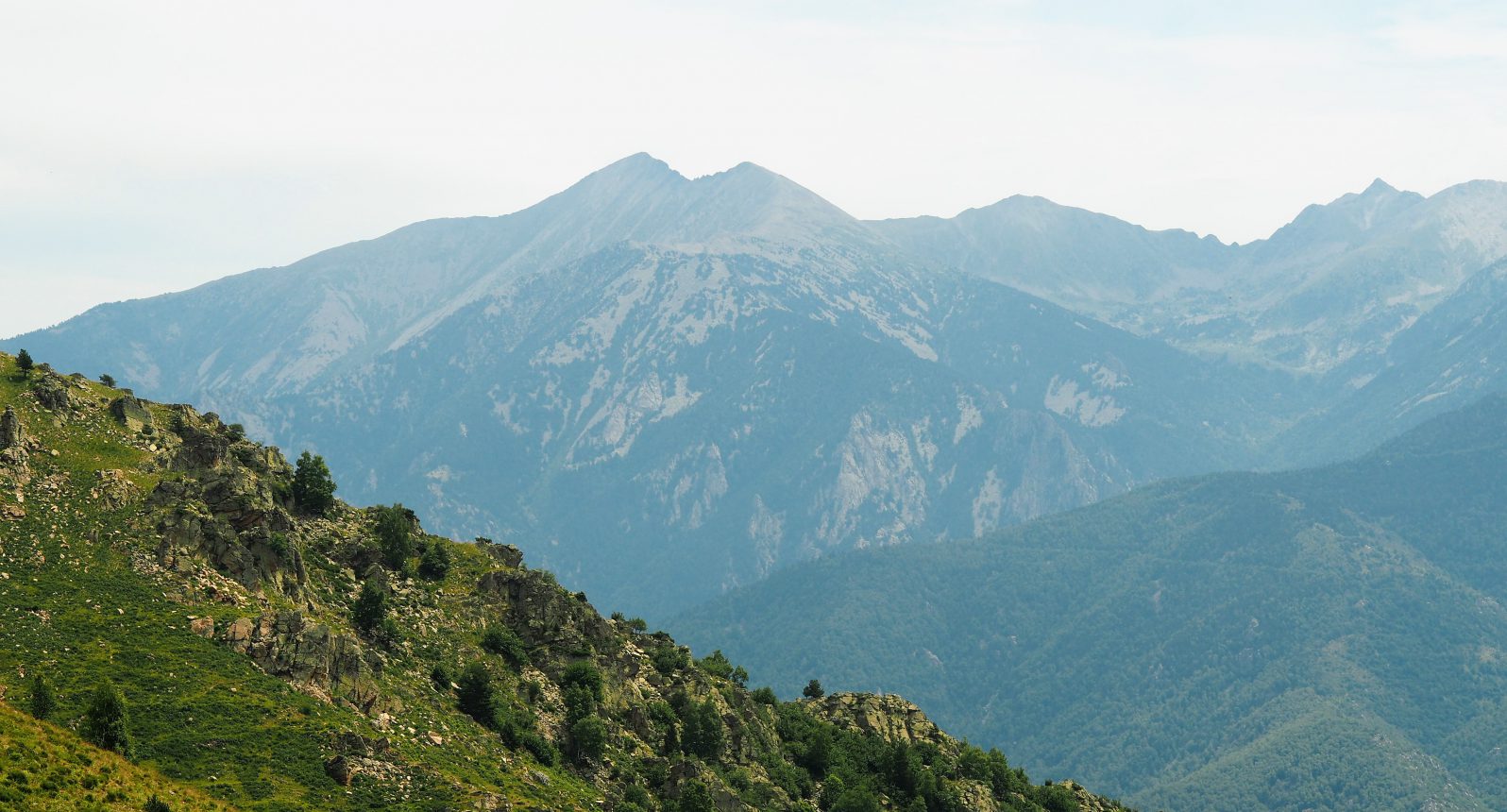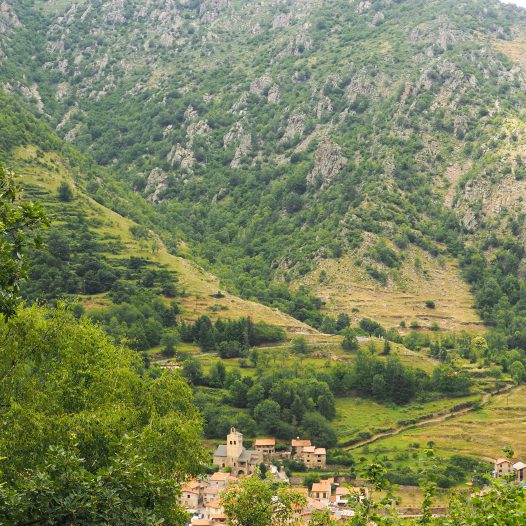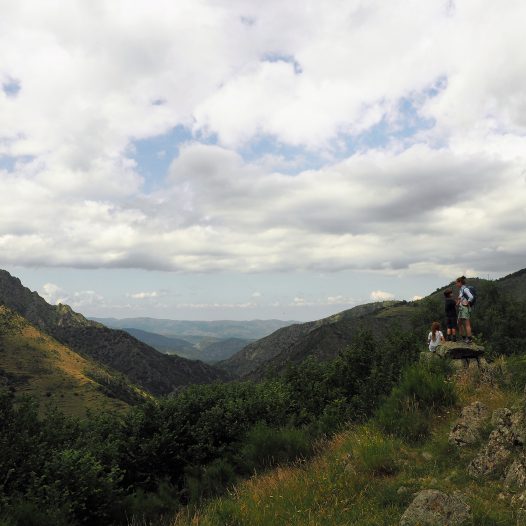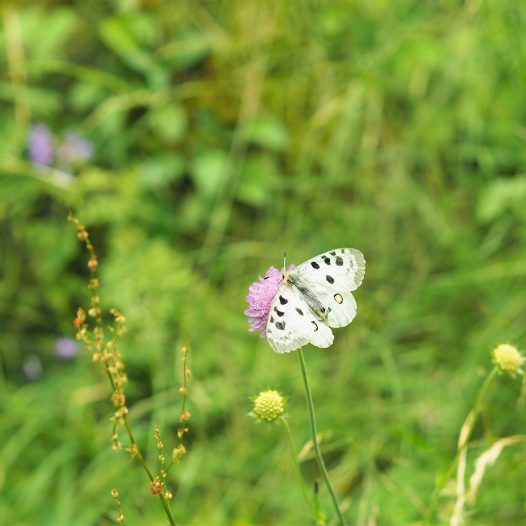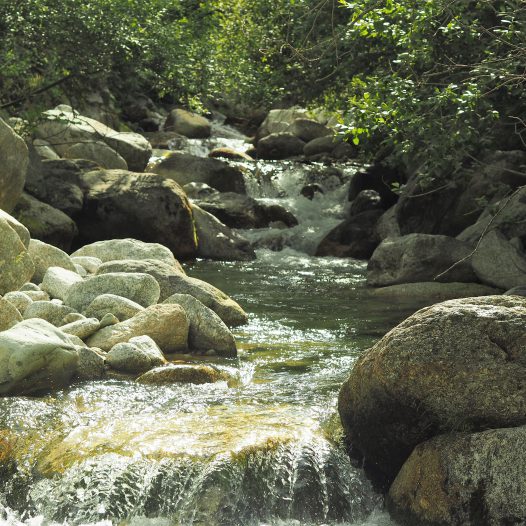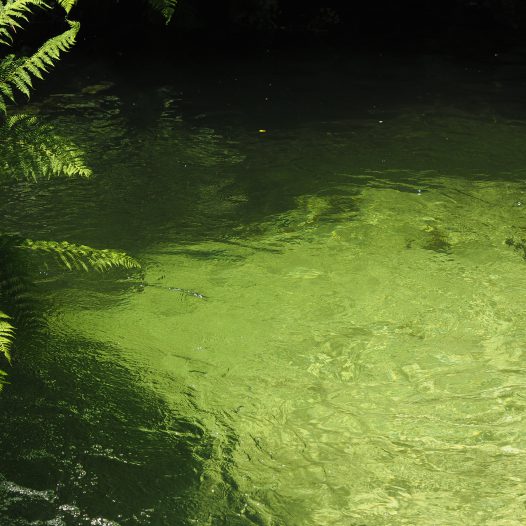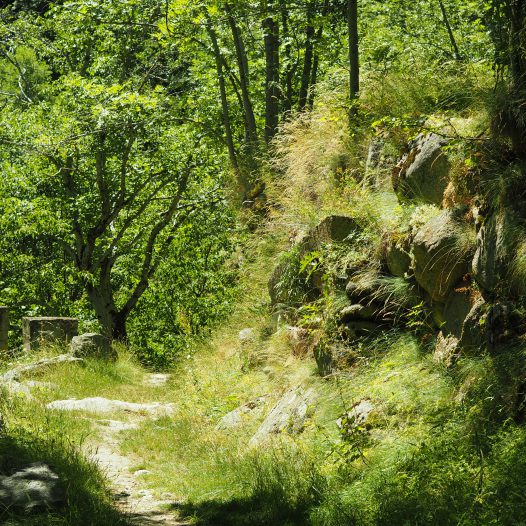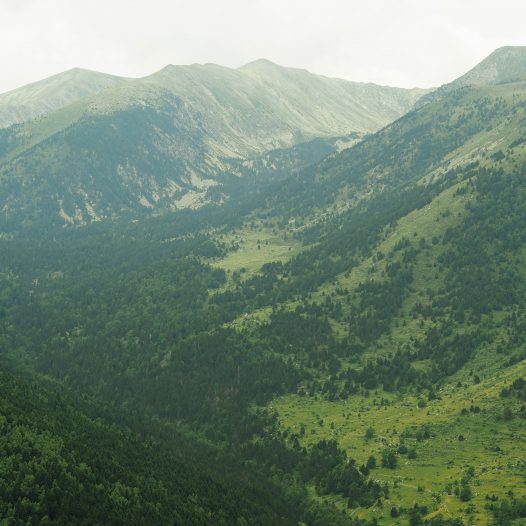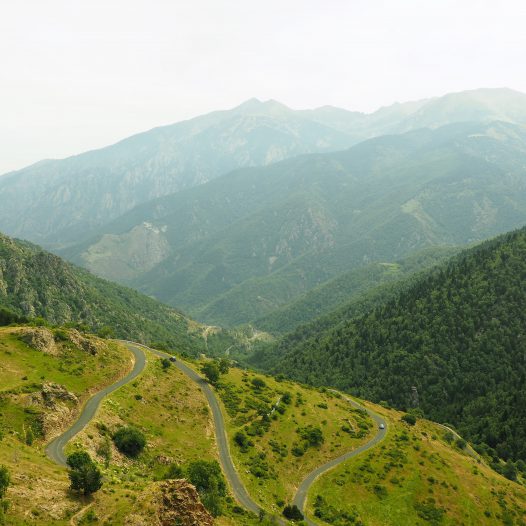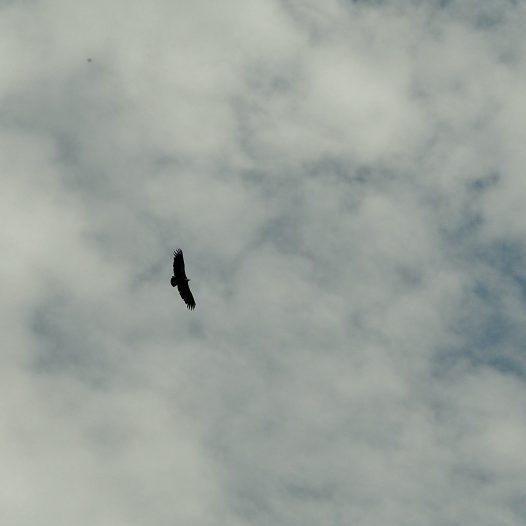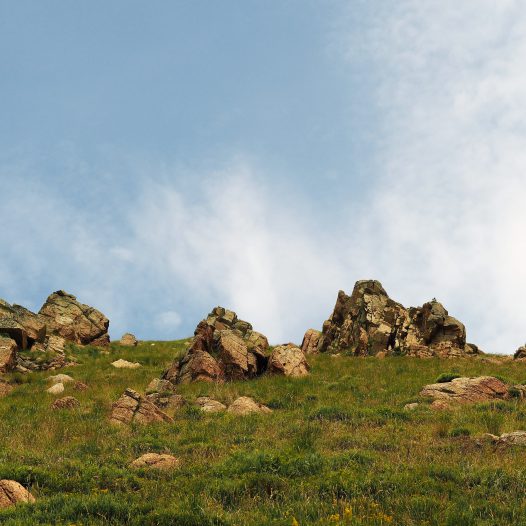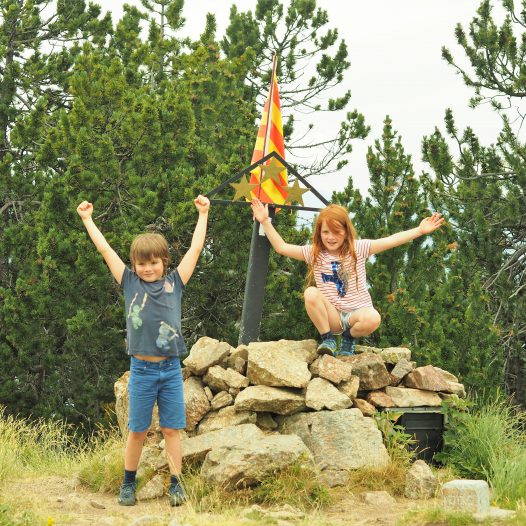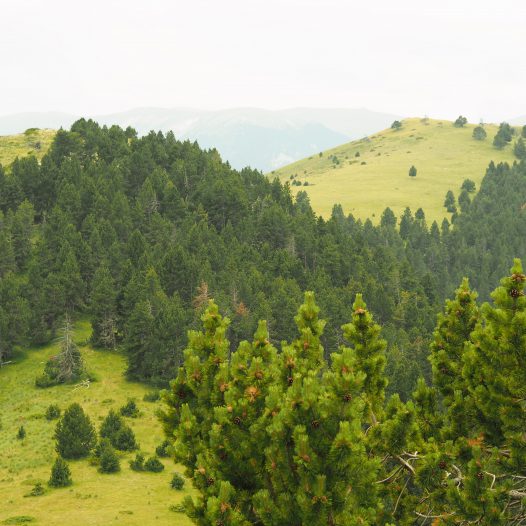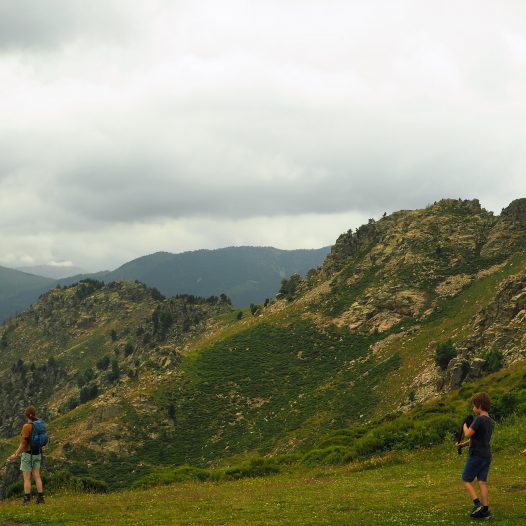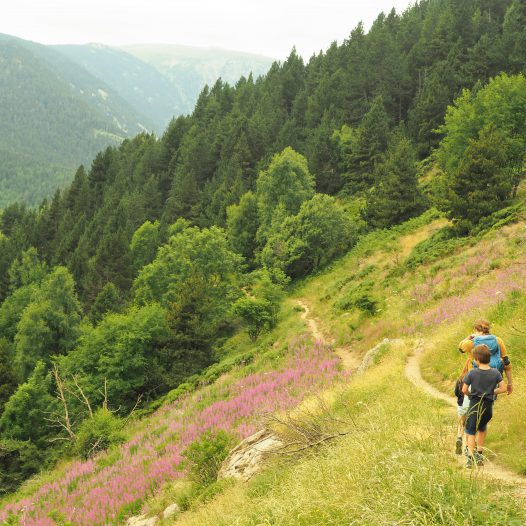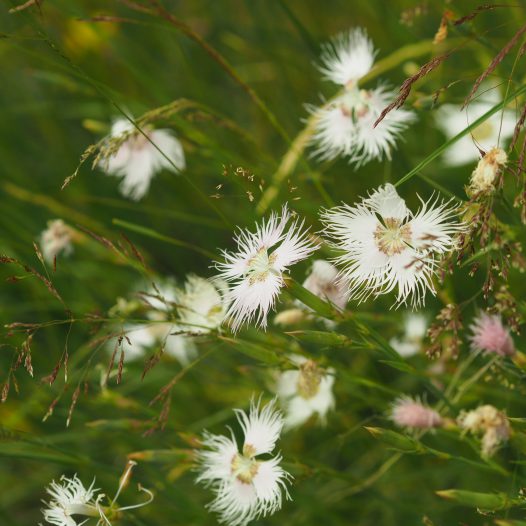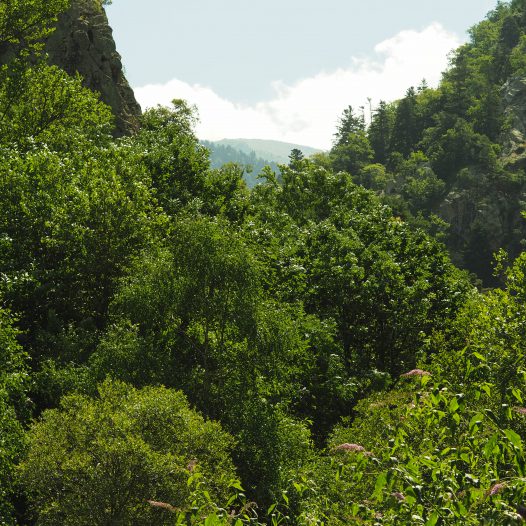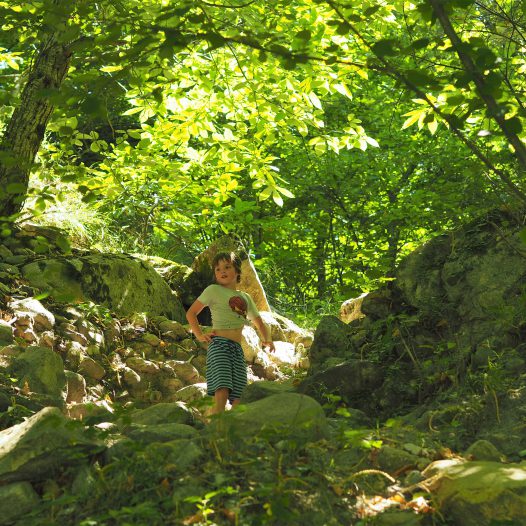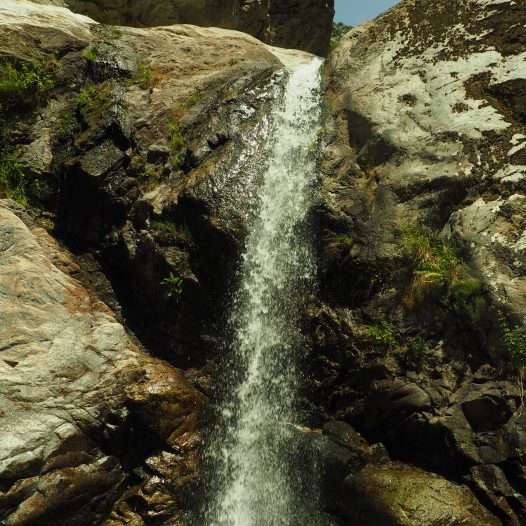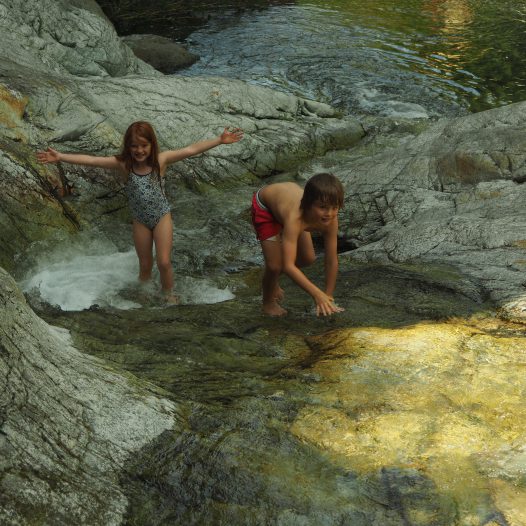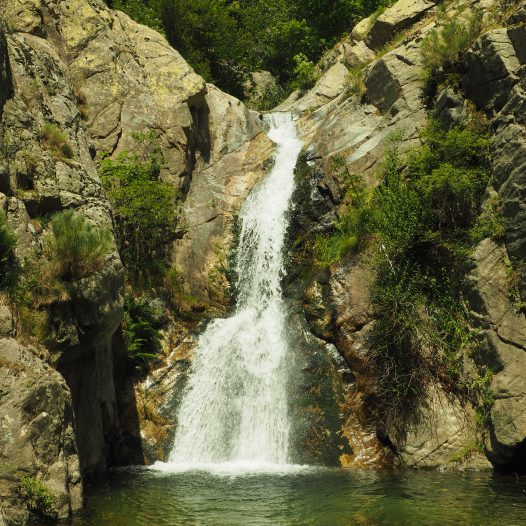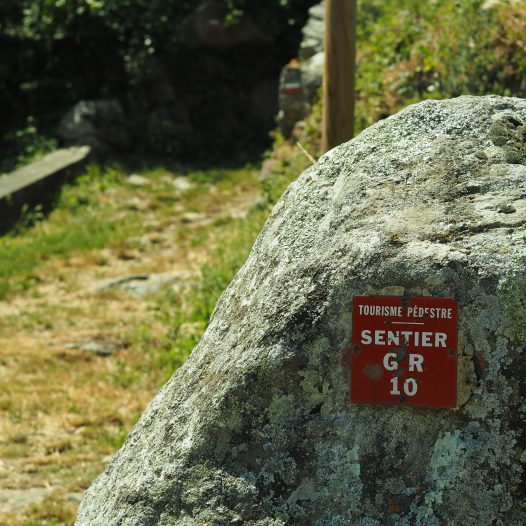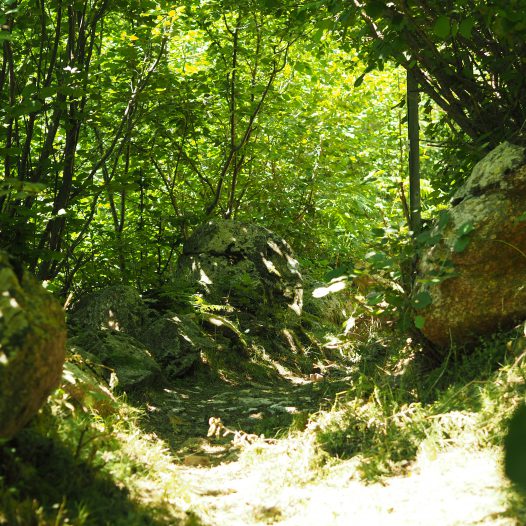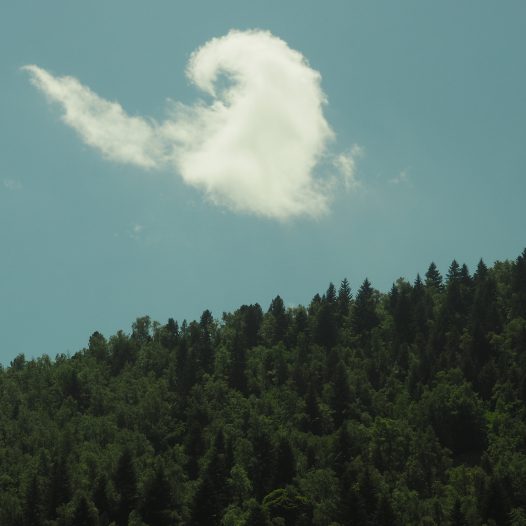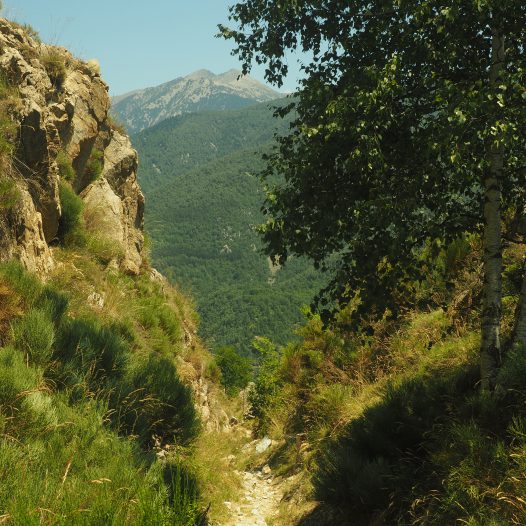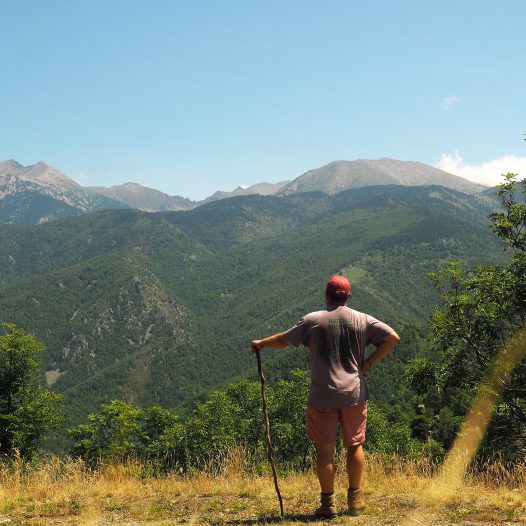#justcanigo is the hashtag that the nice lady at the tourist office of Vernet-les-Bains, the closest nearby town, asks me to use with my Instagram posts, after advising us on the best hikes we should do in the region. It makes refrence to the highest peak in the region, the Pic du Canigou, or Pic del Canigó in Catalan.
Hiking in the Pyrenees is a marvel. Even more, it is a constant meditation on nature, wildlife and the magnificence of the mountains, where the human creature is summoned to peaceful quietness and to the rhythm of its steps over rocks and gravel through dense woods and alongside creeks and pastures. Coming from Munich and an alpine region, what strikes me most is the wildness and the solitude of the area. Whereas hiking paths in the Alps will often take you to an alpine cabin style inn which offers local beer and hearty mountain food, the Pyrenees offer this sort of comfort only on occasion. You are more or less on your own here, but that also means that it is less crowded, and sometimes you may not even meet a single soul on your tour.
But the Pyrenees are also marked by dark chapters of recent history: Jewish men, women and children and other victims of the Nazi-Regime fled through the Pyrenees hoping for safety in Spain and beyond, and Spanish citizens persecuted by the Franco-Regime came through here to seek refuge in France. All of this is hard to imagine today, where we have the privilege to hike through this mountainous paradise peacefully under a clear blue and sunny sky with hundreds and hundreds of butterflies.
Cantapoc
Our first hike starts right in the French Catalan village of Py, where we have set up camp for a little over a week, and takes us up into the mountains, mostly on old shepherd paths and alongside ruins of fieldstone terraces, sheds and cabins which were once used by local fruit farmers in the 18th and 19th century. Now abandoned for some time, the area has been declared a natural reserve, and nature is visibly reclaiming its grounds. What was once cultivated farmlands is now covered in wild forests.
In 1939, our path was used by women and men from Spain who were seeking refuge in neighboring France, or French Catalonia to be more precise, to escape persecution by the Franco regime. As is written, the villagers organized an impressive first aid camp to feed and shelter the refugees and a dozen of gendarmes were assigned to patrol the mountains to provide securing measures and safe passage for them. A memorial stone on the hiking path commemorates this tragedy.
A beautiful feature of this tour is that it meanders alongside a little river, the Rotjà, with crystal clear water that rushes down from the mountain over and through massive rounded rocks and through little pools in which we take quick refreshing baths. We enjoy this tour so much that we repeat a shorter version of it, known as Les Esplanes, a few days later.
Pic des tres Estelles
Another marvelous tour starts at the top of the “village mountain” of Py, the Col de Mantet, up to the Pic des tres Estelles, the “Peak of the three stars” in Catalan, at a little over 2,000 meters altitude.
Our Euro-Volvo-station wagon climbs up the windy mountain road to the Col de Mantet, where we shoulder our backpacks and tighten the shoelaces of our hiking boots, before climbing up ourselves to the Pic des Tres Estelles. Not far from here is the Baraque des Allemands, the “Barrack of the Germans”, an outpost of the Germans during World War II to control the passage through the Pyrenees and into Spain. Again, the dark history of our country surrounds us.
But luckily, our hiking tour up the Pic is so beautiful with such breathtaking views that we leave everything behind us and focus on our steep path. Our twins are jumping up the track like mountain goats, and after a couple of hours, we have reached the Tres Estelles and leave a message in the logbook on site.
Cascades des Anglais
The Cascades des Anglais, the “Waterfalls of the British”, has its name from the time when Vernet-les-Bains welcomed British spa guests in the 19th century who enjoyed a particular hike to a set of waterfalls that are now somewhat of a tourist attraction.
Not much solitude here, but the hike is quite nice and adventurous for the kids, as we need to cross a small river over a rope bridge and climb up a few steep rocky slopes. The ultimate destination of the tour, one major waterfall, is packed with people when we get there. But the children couldn’t care less. They splash out in the water and climb the rocky riverbed up and down, ignoring everything and everyone around them. It may be advisable to do this tour in the early morning or later in the day.
GR 10
The famous GR 10 (GR for Grande Randonnée) is a roughly 800 km long hiking path through the Pyrenees from Hendaye on the Atlantic Ocean to Banyuls on the Mediterranean Sea, a true hiker’s challenge. The minimum duration of the whole tour is allegedly 60 days.
Our little village, Py, is one of the many stops on the GR 10 which is why hikers pass through Py on a daily basis and either set up their tent on the charming and crooked village playground free of charge or spend a night or two at the local inn that offers three rooms with a three-course-dinner menu of astounding quality and breakfast the next day for 55 Euros per person.
I explore a small part of the GR 10 on my own and wonder what it would be like to hike across the Pyrenees along this path. It is certainly a life changing experience.
